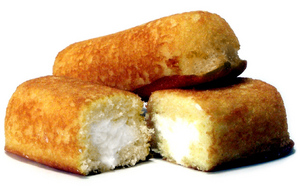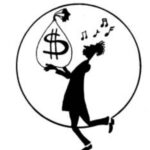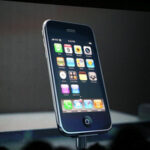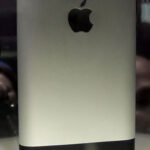As the new bred of so-called “smart phones”, which allow people to access the internet and read email, become more prevalent the iPhone produced by Apple and the Blackberry made by Research in Motion are two such phones which have developed a loyal fan base. However, mere decades ago who would have thought that people would be using a “Blackberry” to send instant messages? What if the makers of the Blackberry had decided to call it the “Mango” instead? Surprisingly many popular brand names have had odd sounding initial names before a name change helped skyrocket them to popularity. Ten considered, and ultimately rejected, names for famous brand names are listed below.
1. McGillicutty’s. This was what McDonald’s was going to be named. However, an astute corporate executive noticed that the name bore a striking resemblance to the serial killer “Stabby McGillicutty” who lived in east Texas. Needless to say, this name didn’t make the cut.
2. Peach Computers. Steve Jobs had considered calling his little computer company “Peach Computers.” Would consumers have been reluctant to buy an iPeach over an iMac? The world may never know.
3. Potato Shavings. Potato chips were invented when Captain Ahab was sailing around the world and demanded that his chef cut his potatos very thinly. The irate chef cut his potatos so thin, and deep fried them, that he inadvertently produced the first batch of potato chips. Needless to say Captain Ahab loved them and the chef then recommended calling them “Potato Shavings”. Fortunately he was overruled and the world now eats millions of metric tons of oily potato chips each day.
4. Talky-Walky. This was the original name for the Sony Walkman, which introduced consumers to portable music before the iPod came into existence. Sony wanted to use this name was which rhymed. However, company ad executives were afraid that the name would be confused with “Walkie-Talkies” which were also popular at the time.
5. Uncle Adolf’s Surplus Shack. Trader’s Joe, which was started by a pair of brothers who were German soldiers during World War 2 got its start as an idea for selling surplus Nazi army supplies. However, due to negative public reaction the name of the chain was rebranded as Trader Joe’s within two weeks of opening. Ii is unknown if Joe is a cryptic reference to Joseph Stalin.
6. Pasty Logs. This was what Twinkie’s were going to be called. However, after the inventor of the Twinkie heard his niece describe the confection as “Twinkling” when it was heated with a blow torch during initial testing of shelf durability the name Twinkie popped into his head. The rest, as they say, is sweet history.
7. Cartell-O. The inventors of the dessert treat Jell-O initially were going to call the treat Cartell-O as it is made from ground up cow’s cartilage and bones. However, they realized that comparing the food to jelly was a better idea and the name became Jell-O after heated debate.
8. Meaty Bread Blisters. Before they were called Hot Pockets, the frozen manufacturing company that created them considered the “realistic” naming approach as the idea of a bread pocket filled with mystery meat and artificial cheese was new and consumers might not understand what they were buying. The name was changed when it was realized that it was better if consumers didn’t know exactly what is put into hot pockets.
9. Unicorn Droppings. The makers of Almond Joy snack food originally considered relating their confection to mythical unicorn in some fashion, but in the end the name was a turn off to everybody except for college students and zoo employees.
10. Uncle Matt’s Butt Paste. This early name was given for the popular Desetin lotion used for baby’s diaper rash. Although popular a more “medicinal” sounding name was decided upon.
For the top ten corporate assets that BP will sell to help pay for the BP oil clean up, click here.
Sources:
General knowledge of the brand names of common consumer items.






